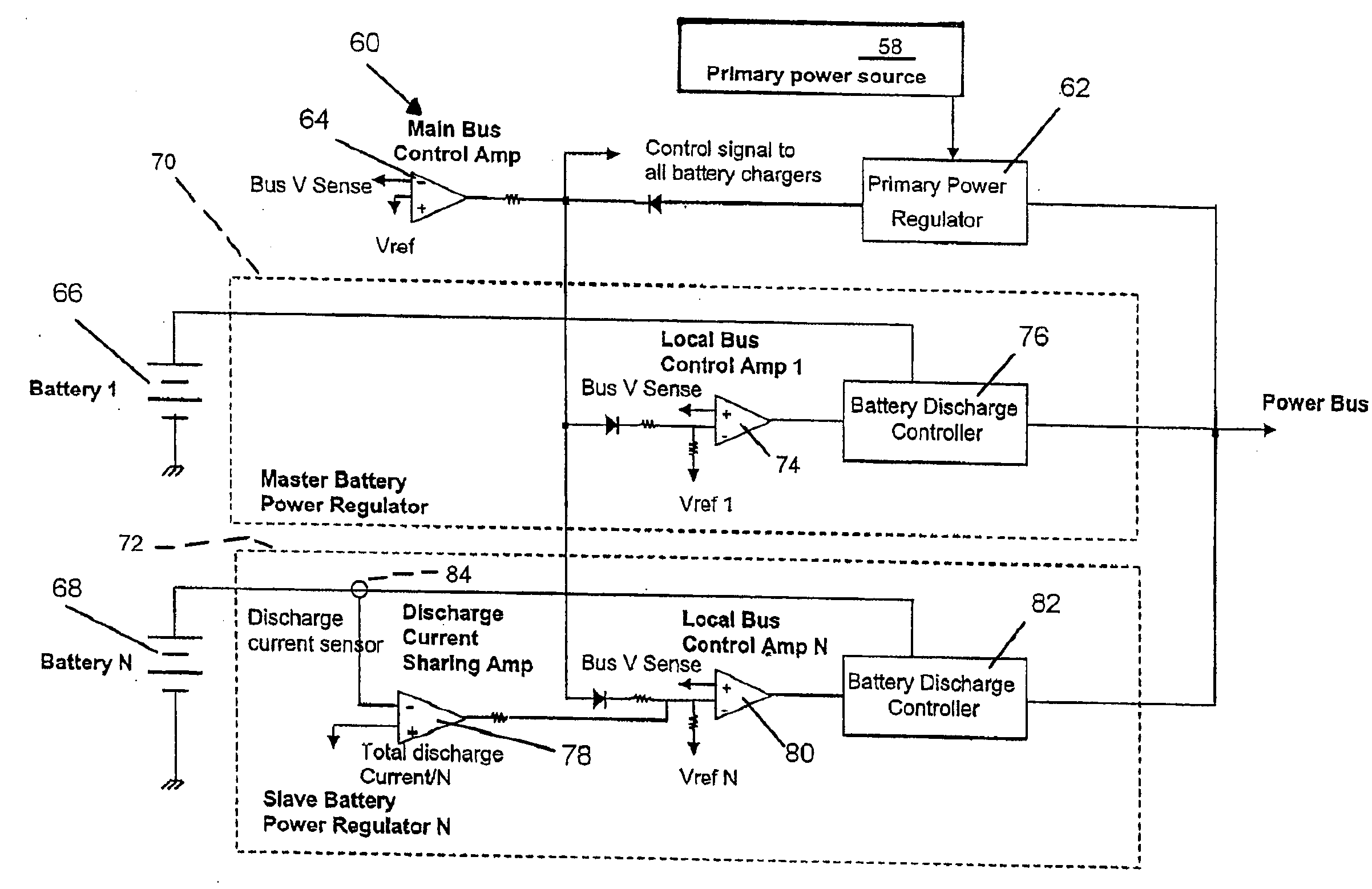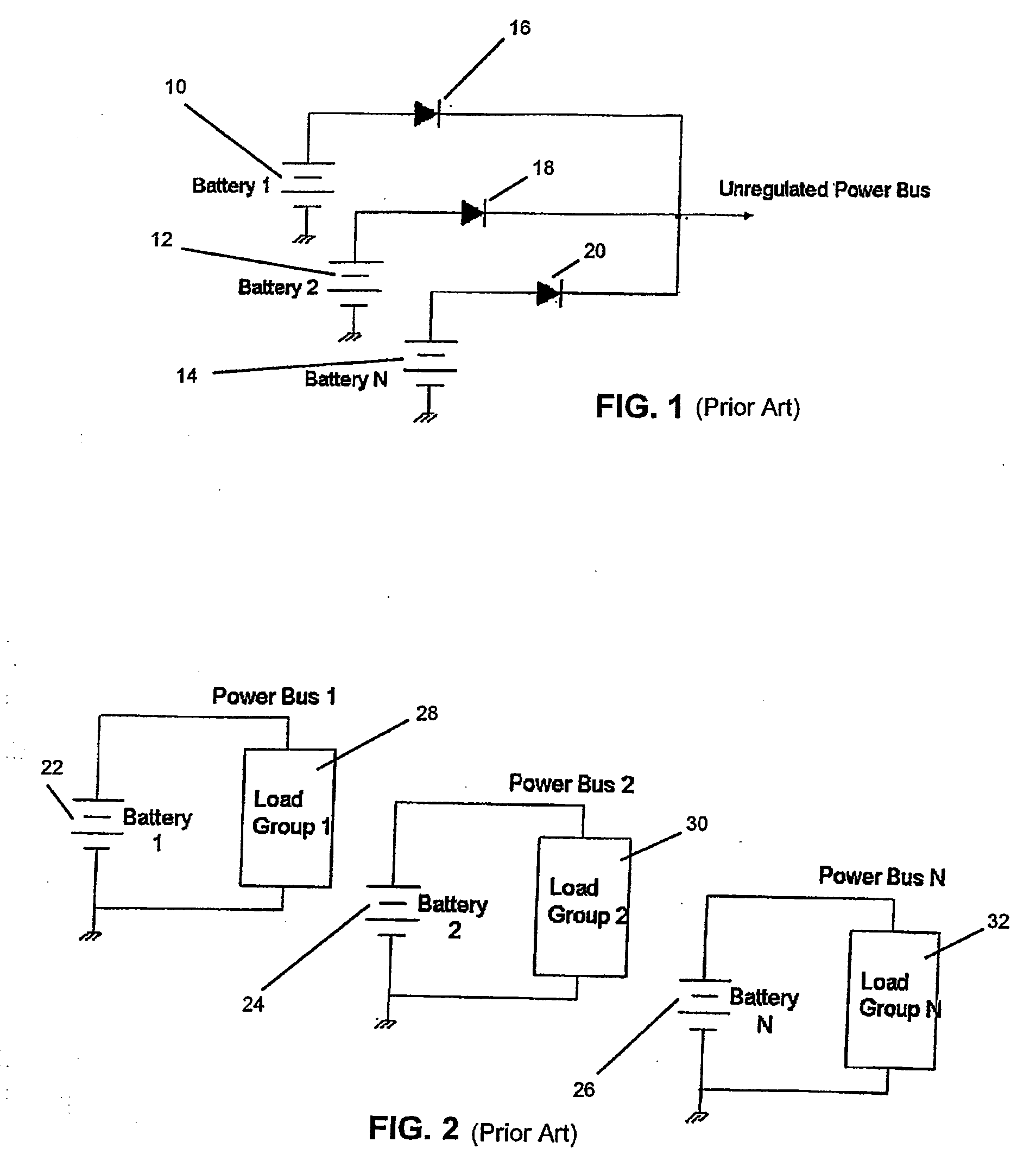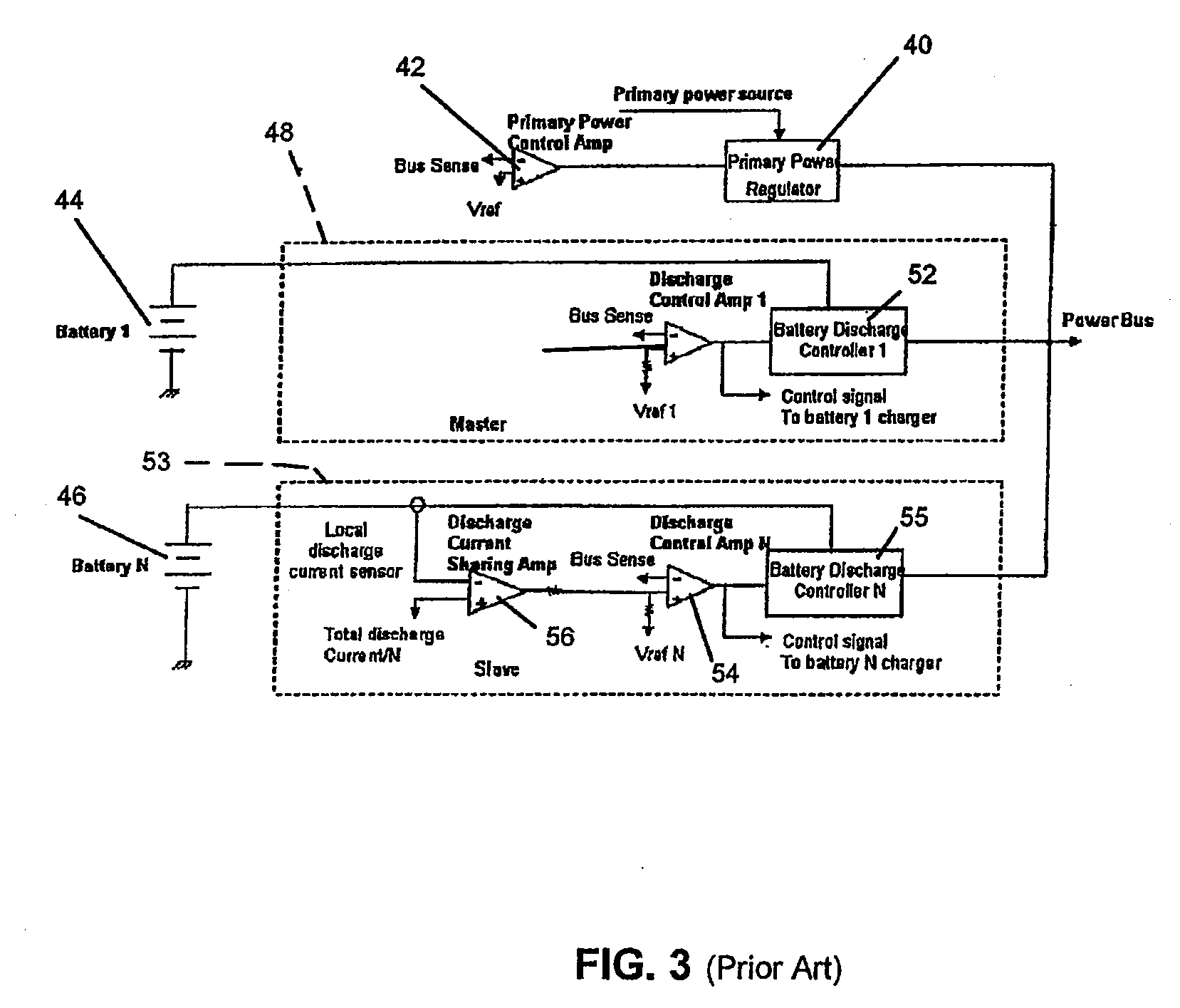Battery discharge current sharing in a tightly regulated power system
a power system and discharge current technology, applied in the direction of electric vehicles, dc network circuit arrangements, transportation and packaging, etc., can solve the problems of long-term degradation or damage of batteries, ineffective utilization of battery capacity, and battery will give rise to a permanent short circuit, so as to inhibit battery charging and eliminate the risk of discharging one battery
- Summary
- Abstract
- Description
- Claims
- Application Information
AI Technical Summary
Benefits of technology
Problems solved by technology
Method used
Image
Examples
Embodiment Construction
[0017]Referring to FIG. 4, there is shown a tightly regulated power system 60 with battery discharge current sharing capability in accordance with the principles of the present invention. The tightly regulated power system 60 includes a primary power source 58 connected to a primary power regulator 62 for providing power to a power bus. The primary power source 58 may be virtually any type of arrangement for generating electric power which also operates with a battery back-up power system to provide power when the primary power source is unavailable. The inventive tightly regulated power system with battery discharge current sharing capability 60 is particularly adapted for use with a primary power source 58 comprised of a solar array such as used in a spacecraft where minimizing the mass of the power system is of critical importance and a battery back-up power capability is provided for the purpose of providing electric power during eclipse.
[0018]The tightly regulated power system ...
PUM
 Login to View More
Login to View More Abstract
Description
Claims
Application Information
 Login to View More
Login to View More - R&D
- Intellectual Property
- Life Sciences
- Materials
- Tech Scout
- Unparalleled Data Quality
- Higher Quality Content
- 60% Fewer Hallucinations
Browse by: Latest US Patents, China's latest patents, Technical Efficacy Thesaurus, Application Domain, Technology Topic, Popular Technical Reports.
© 2025 PatSnap. All rights reserved.Legal|Privacy policy|Modern Slavery Act Transparency Statement|Sitemap|About US| Contact US: help@patsnap.com



